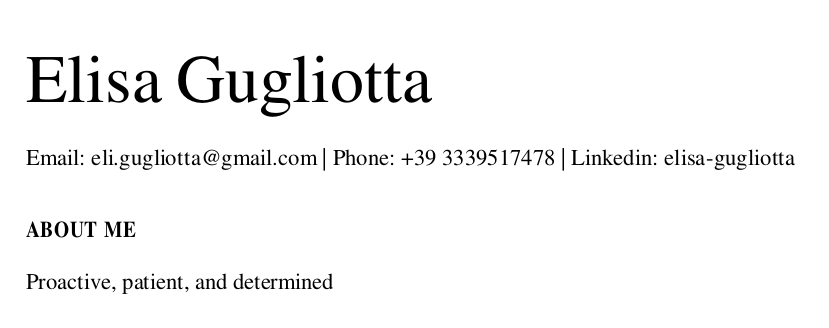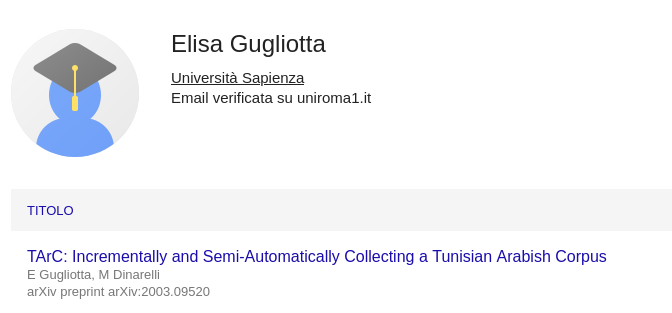Elisa Gugliotta

Welcome 🖖
I am a computational linguist experienced in Arabic language. In fact, I recently obtained a Ph.D. degree at Sapienza University of Rome, ISO department, and at Université Grenoble Alpes, LIDILEM and LIG laboratories. My research has been supervised by the following Professors: Giuliano Mion, Olivier Kraif, Marco Dinarelli and Giuliano Lancioni. The monograph derived from my thesis is entitled Tunisian Arabizi: Linguistic Analyses and Corpus Building using Natural Language Processing.I have been a Post-Doc in Natural Language Processing at the Université Grenoble Alpes, LIG lab, GETALP team. The Post-Doc was funded by the MIAI Institute in Grenoble. The project was about extending the Tunisian Arabic processing tools created as part of my doctoral research. I was also a Post-Doc in Dialectal Arabic Computational Linguistics at the Istituto di Linguistica Computazionale "A. Zampolli" (CNR-ILC) of Pisa (Italy), being involved in the CWALM project.
My last postdoctoral experience was at the Neuro-Psycho-Linguistic Laboratory at the University of Toulouse Jean Jaurès. My primary commitment was to the CLASS project, where I was also in charge of the tutorials (TD) for the course Outils d'analyse.
I am currently a researcher at the University of Sassari (UNISS), where I teach courses in Arabic language and literature, contributing to the linguistic, literary, and cultural education of students. I am also the PI of RĀBIṬA, a PNRR-funded project aimed at bridging the gap between traditional educational tools and interoperable digital resources for the Arabic language. For more information, take a look at the dedicated repository!
My research focuses on the creation and analysis of corpora of spoken and written Arabic, with a particular interest in dialectal and learner varieties. I combine computational methods, including deep learning, with digital humanities approaches to perform both qualitative and quantitative analyses of linguistic variation phenomena in Arabic. My studies explore multilingual speech processing, phonetic transcription, and the development of interoperable resources and tools to support linguistic research, teaching, and the preservation of linguistic diversity.

